In the wasp world, very few need to ask about gender since humans are unbiased with their disgust for both sexes. Overall, wasps don’t have much of a fan club or people who care to know their sex before running from the stinging insect or trying to kill them. Unfortunately, we humans tend to forget that wasps play a mighty big role in keeping the Earth healthy. Without their existence, we would likely not exist. The little flying insects certainly have a terrible reputation. If ever there comes a day when it is important to know how to differentiate the wasp sexes, we want you to be well prepared. In this article, we will go over the male and female wasp’s key differences and roles.
Sexual Dimorphism of Wasps

Red male paper wasp
©Insects Unlocked / CC0 Public Domain – License
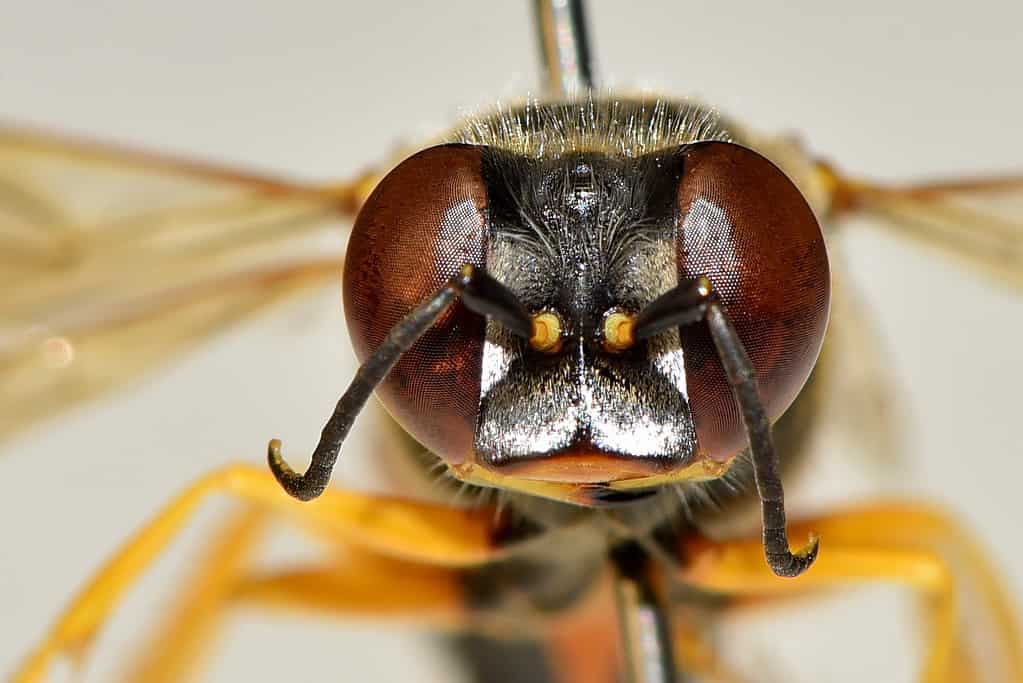
Male sand wasp
©jeans_Photos / CC BY 2.0 – License

Sand wasp that is male
©jeans_Photos / CC BY 2.0 – License
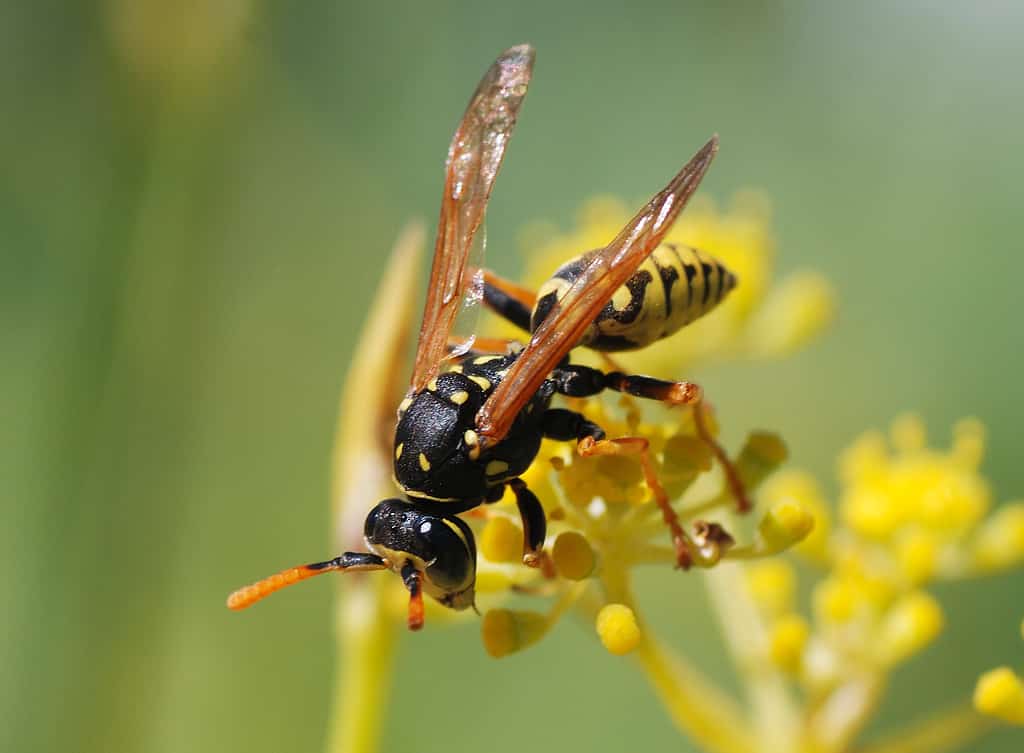
Male paper wasp
©Alvesgaspar / CC BY-SA 3.0 – License
Sexual dimorphism isn’t quite as obvious in wasps as in some other animals. Male and female wasps share numerous differences, but those differences are slight. It takes a trained and educated eye to be able to spot the differences in this quickly moving insect. It isn’t something most people would notice since they are too busy running away from the wasps to pay attention to much else. Most wasps do not want to sting you; they may just be curious about the color you are wearing or the way you smell. Many wasps actually cannot sting you. Wouldn’t it be nice if they could be a bright color so we could tell them from the stinging wasps?
While we’re on the subject, leave the wasps alone. When they’re mad, they can sting you so many times that it can kill you or put you in the hospital. If you really need to see the difference up close and personal, do so with dead wasps. They are highly sensitive to light, so don’t try to sneak up on them at night armed with your flashlight.
Avoid messing with the flying weapon insects from August through October. That is when wasps are the most aggressive. After that time, the males will begin to die off, and the queen and new queens will jump ship and bury themselves in the ground until spring when it’s time to build another nest.
Follow these instructions to avoid making a wasp act aggressively.
- Avoid making loud noises or fast movements.
- Do not wear colors that attract pollinators.
- Do not swat at them, ever.
- Do not wear scented lotion, oils, body spray, or perfume.
- Do not get near their nest.
- If you kill a wasp, get out of there! A wasp’s body releases chemicals that are like an alarm system, and other wasps will arrive quickly to avenge the death of one of their own. Mostly, they are just super worried you will find their nest and eat the offspring in it.
Female Wasps
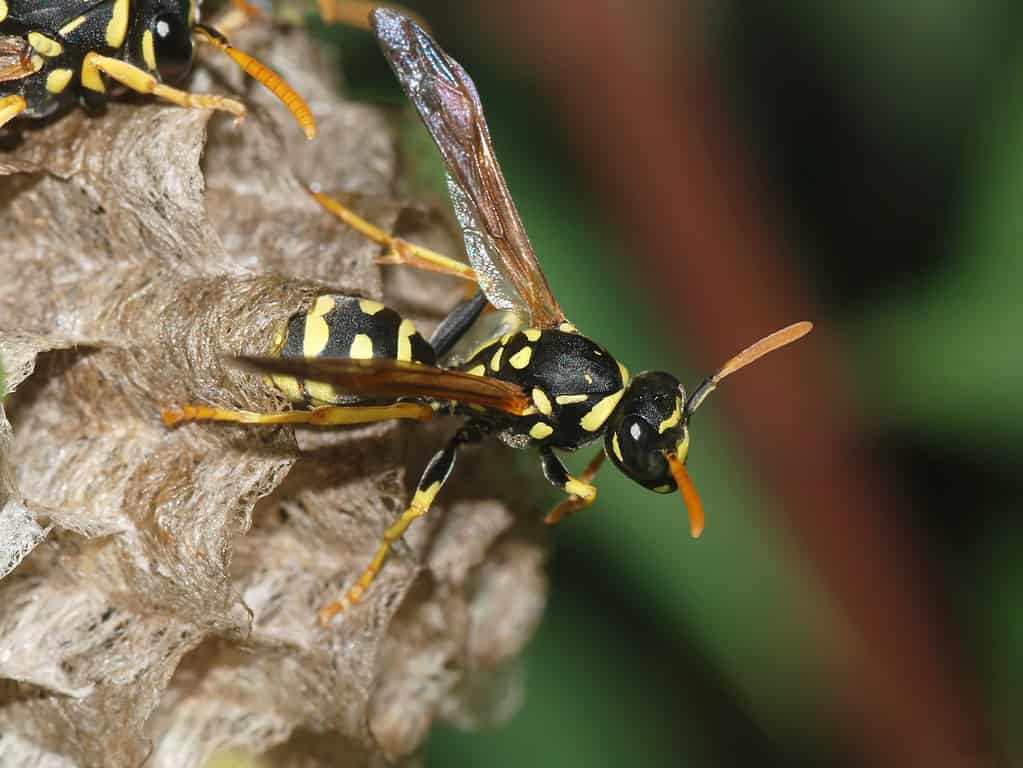
Female paper wasp
©Alvesgaspar / CC BY-SA 3.0 – License

Sterile female worker
©Bruce J. Marlin / CC BY-SA 2.5 – License
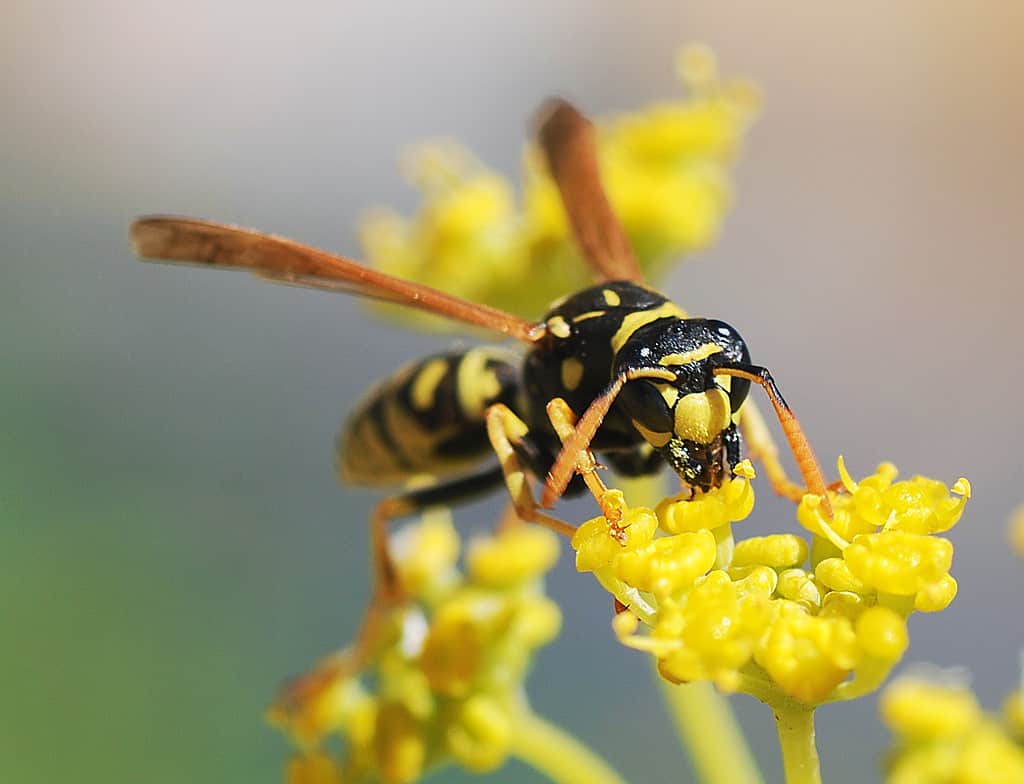
Female paper wasp
©Alvesgaspar / CC BY-SA 3.0 – License

Female digger wasps dig lots of holes in the yard and capture insects to feed their not-yet-hatched young.
©gailhampshire from Cradley, Malvern, U.K / CC BY 2.0 – License
- Male wasps are smaller than females. Females must be larger with girthier abdomens in order to carry eggs. The abdomen of the male wasp is long and narrow compared with the female’s. This is also true with many different animals, spiders, and insects.
- In addition to the last entry, female worker wasps are shorter and more compact than males. Only the queen is larger than both.
- Female worker wasps are sterile by choice because only the queen is allowed to mate and lay eggs. Males are not sterile.
- The female wasps work together as if in a closely knit network, while the males are not as far up in ranking. If the females do not like a male, they may attack and kill him.
- The female has yellow stalks on its antennae. Males have all black antennae.
- Females tend to stick close to the nest since they have a line of defense, whereas the males do not.
- There are no yellow markings on the top of the male wasp’s thorax. The female wasp has yellow markings.
- The antennae on a female paper wasp is shorter than a male’s, with a small curve. On the male’s antennae, there is an extra segment because of their longer antennae with curved ends.
- Only female wasps can sting. They do so with their ovipositor, which is also their sex organ. The female wasp does not have barbs on its stinger, making it possible to sting and deliver venom to its victim repeatedly. The males do not have ovipositors, so they have nothing to sting with. They do sometimes use the barbs on either side of their sex organs located at the tip of their rear ends to fight off animals trying to make a meal of it. Rarely, they can “sting” a person with the barbs, but it does not contain venom.
- Male wasps have an additional segment to their abdomens, making them longer than the worker female but not longer than the queen. This is the case with all types of wasps.
- The male and female solitary wasps are all fertile and it is rare to be attacked by one. The social wasps are the troublemakers.
- At the end of the season, before the queen and new queens find a nice underground den to overwinter in, they mate with new kings. The males die shortly after mating, but the females go on to start new colonies of their own the next spring.
- Female wasps build the nest; males do not. Specifically, the queen is the one who picks out the location and starts things off.
Clarity on Differences Between Male and Female Wasps
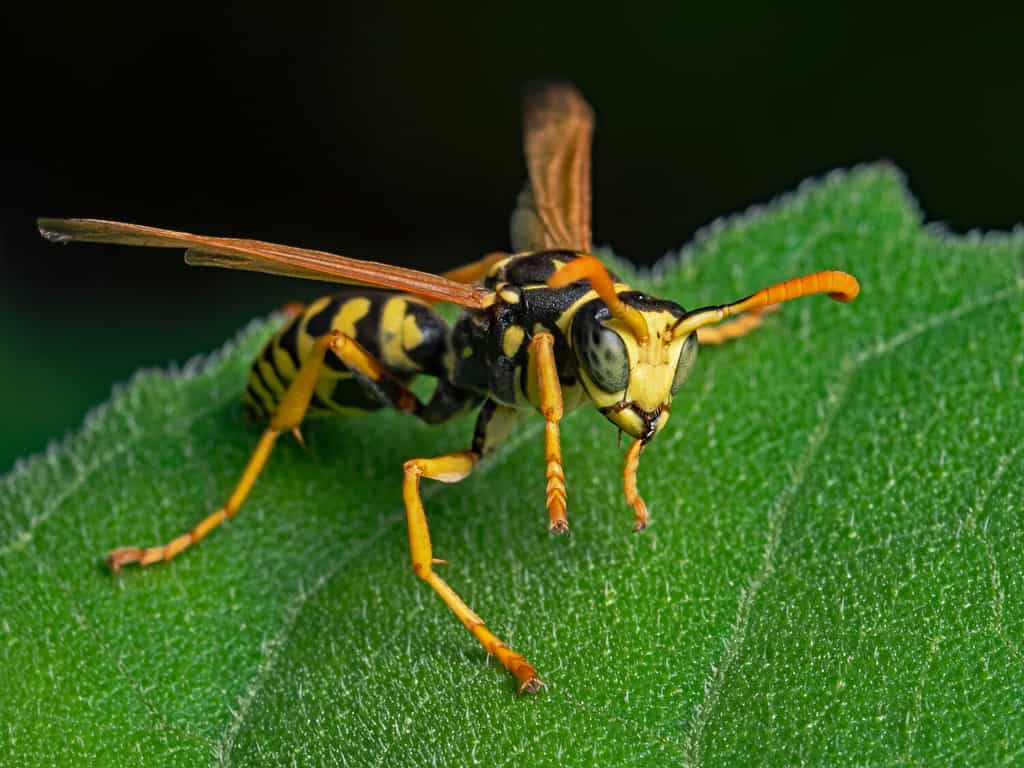
Male wasps put on an impressive show of aggression with the diving and chasing they do, but they cannot sting.
©scubaluna/Shutterstock.com
The main differences between male and female wasps come down to a few things. The physical characteristics, roles they play in the hive, stinging ability, life expectancy, and attitude. They might say the same thing about humans. Keep in mind that over 120,000 species of wasps exist on our planet. They play a very important role but don’t seem to receive anywhere near the praise that honeybees do. Wasps are important pollinators that keep our ecosystem intact. Maybe someday they will also be seen as important as honeybees, and society won’t hate them quite as much!
The photo featured at the top of this post is © Reinhold Möller / CC BY-SA 4.0 – License / Original
Thank you for reading! Have some feedback for us? Contact the AZ Animals editorial team.







